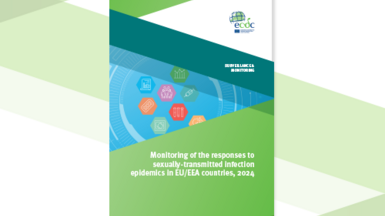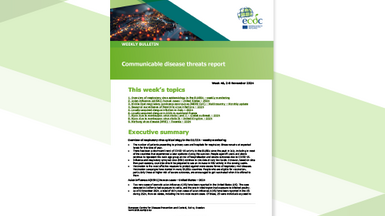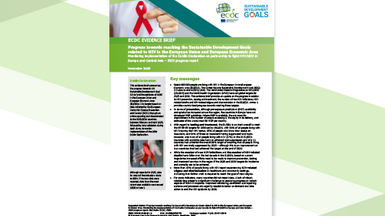A comprehensive approach to HIV/STI prevention in the context of sexual health in the EU/EEA
This report highlights the benefits of a comprehensive approach to disease prevention, integrating HIV and STI control programming in Europe into broader public health strategies. Attempts to prevent HIV and STI among vulnerable groups can be more effective when seen from the context of sexual health and health promotion. This can be achieved by mapping past and current activities and identifying key stakeholders and potential data sources in the European Union and European Economic Area.
Executive Summary
Sexually transmitted infections (STI), including HIV infection, remain a major public health challenge across Europe: STI are not only co-factors for HIV, but, if untreated, can also cause long-term health consequences and infertility.
In 2011, nearly 347 000 cases of chlamydia were reported in countries of the European Union and the European Economic Area (EU/EEA), making chlamydia the most frequently reported STI in Europe. And recently published data show that there is no decline in HIV transmission across the EU/EEA with more than 29 000 new HIV infections reported in 2012.
This report highlights the benefits of a comprehensive approach to disease prevention, integrating HIV and STI control programming in Europe into broader public health strategies, whilst recognising the linkages between different sexual health outcomes and the overlap and synergy between the interventions required to address HIV/STI and other aspects of sexual health. Groups most vulnerable to infection, including young people, men who have sex with men (MSM), sex workers, migrants, people living with HIV (PLHIV), populations at risk of sexual violence, and people who inject drugs (PWID) experience a range of sexual health needs. Vulnerability among these individuals is determined not only by risk behaviour, such as unprotected sex, but by social structural determinants that can affect access to healthcare and education. As poor sexual health, including HIV and STIs, is a significant cause of morbidity and mortality in Europe, prevention efforts need to be strengthened.
The overall aim of this project was to increase the understanding of how HIV and STI can be prevented among vulnerable groups in the broader context of sexual health and health promotion. This aim was achieved by mapping past and current activities, key stakeholders, and potential data sources in the European Union and European Economic Area (EU/EEA).







